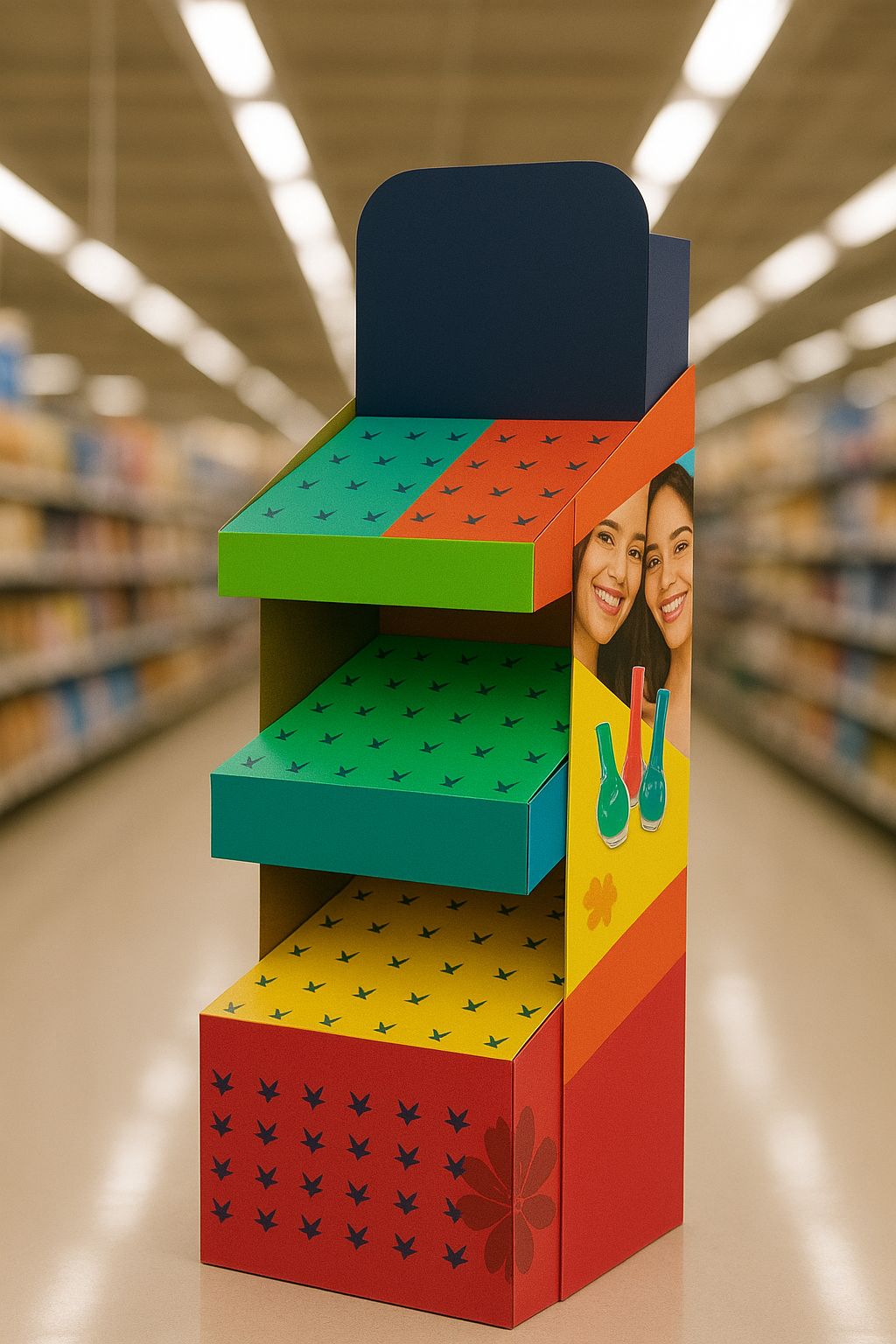In the competitive world of retail, standing out at the point of sale is crucial. While many opt for costly, permanent solutions, the smartest brands have discovered the potential of custom cardboard displays. These versatile, affordable, and sustainable displays not only grab attention but can also tell a story, launch a new product, or simply boost sales.
Case Study 1: L’Oréal and Their Makeup Line
L’Oréal, a cosmetic giant, faced the challenge of launching a new line of lipsticks in pharmacies and supermarkets. Their goal was to create a big visual impact and make it easy for customers to interact with the products. The solution was an innovative cardboard floor display designed to look like a vanity table. This display not only showcased the products attractively but also included mirrors and testers.
Results: The campaign led to a 25% increase in sales for the new line during the first month and tripled the time customers spent in front of the display. The unit became a focal point in the store, attracting both new and returning customers.
Case Study 2: Coca-Cola and Their Summer Campaign
For their summer campaign, Coca-Cola wanted to promote their soft drink in convenience stores and supermarkets. Instead of simply stacking their products, they chose a themed cardboard display that recreated a beach cooler. The design, with vibrant colors and brand graphics, instantly evoked a feeling of fun and freshness—exactly what the brand wanted to associate with its product for the season.
Results: The strategic placement and creative design of the Coca-Cola cardboard display led to an 18% increase in sales of their 600 ml bottles during the promotion period. The display not only boosted sales but also reinforced the brand’s image and its connection to summertime.
Case Study 3: “Grandma’s Bread,” an Artisan Bakery
A local bakery called “Grandma’s Bread” wanted to promote its new artisan cookies in coffee shops and small gourmet stores. With a limited budget, they opted for simple but elegantly designed cardboard counter displays. Each display had a small chalkboard where they could handwrite the flavor of the day, giving it a personal, handcrafted touch that aligned perfectly with their brand.
Results: The visibility of the cookies on the counter increased dramatically. Within the first few weeks, the stores reported a 40% increase in sales for this product. The low cost of the displays allowed the bakery to distribute them to multiple points of sale without a large investment, proving that you don’t need a huge budget to make a big impact.
Conclusion:
These cases show that, far from being just simple product holders, cardboard displays are powerful marketing tools. When designed creatively and placed strategically, they can generate a significant return on investment, increase brand visibility, and tell a story that connects with consumers.
With Cyecsa / Kibox, you will have the peace of mind that you are working with a company that cares ecologically, socially, and economically.
If you want more information, connect with us via Kibot for a personalized consultation


